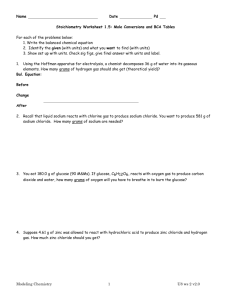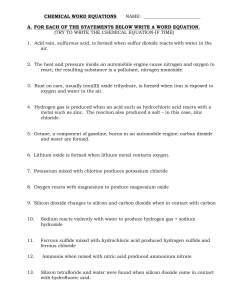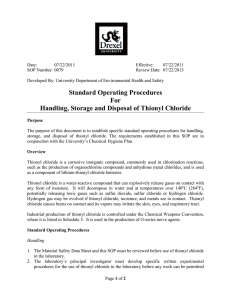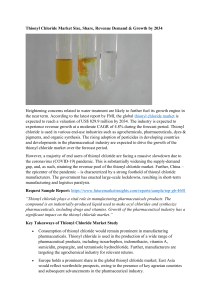Stoichiometry Practice Problems
advertisement
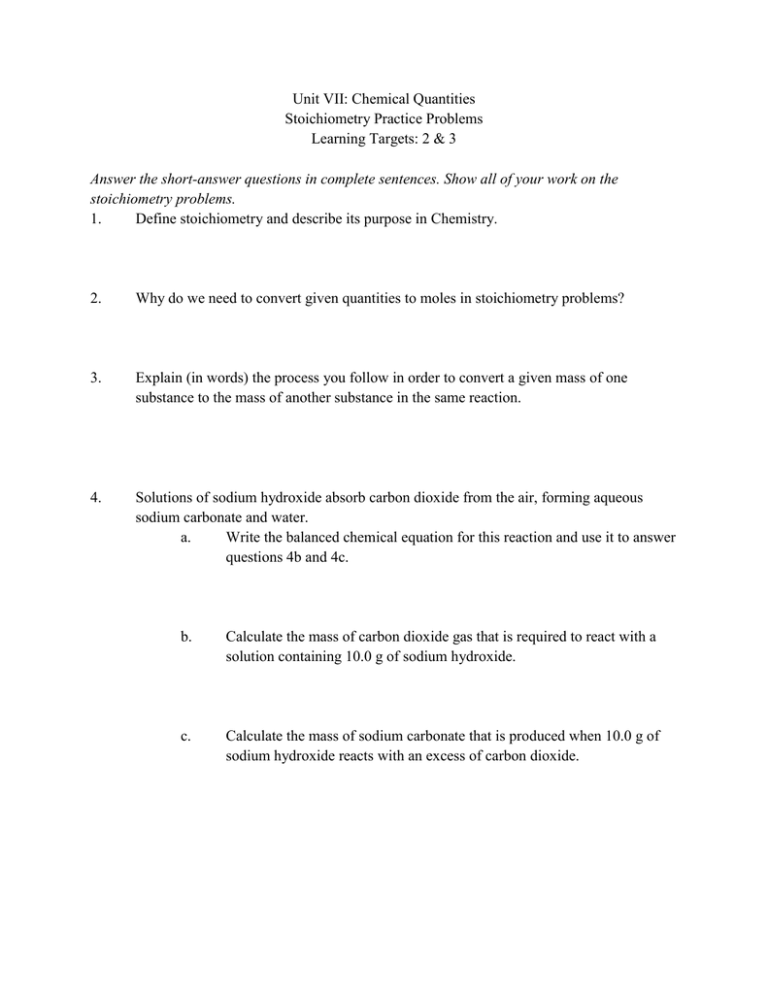
Unit VII: Chemical Quantities Stoichiometry Practice Problems Learning Targets: 2 & 3 Answer the short-answer questions in complete sentences. Show all of your work on the stoichiometry problems. 1. Define stoichiometry and describe its purpose in Chemistry. 2. Why do we need to convert given quantities to moles in stoichiometry problems? 3. Explain (in words) the process you follow in order to convert a given mass of one substance to the mass of another substance in the same reaction. 4. Solutions of sodium hydroxide absorb carbon dioxide from the air, forming aqueous sodium carbonate and water. a. Write the balanced chemical equation for this reaction and use it to answer questions 4b and 4c. b. Calculate the mass of carbon dioxide gas that is required to react with a solution containing 10.0 g of sodium hydroxide. c. Calculate the mass of sodium carbonate that is produced when 10.0 g of sodium hydroxide reacts with an excess of carbon dioxide. 5. Solid thionyl chloride (SOCl2), which is used as a drying agent in many synthetic chemistry experiments, reacts with water to form sulfur dioxide gas and hydrogen chloride gas. a. Write the balanced chemical equation for this reaction and use it to answer questions 5b and 5c. 6. b. Calculate the mass of water consumed by the complete reaction of 3.50 x 102 g of thionyl chloride. c. Calculate the mass of hydrogen chloride produced by the complete reaction of 3.50 x 102 g of thionyl chloride. Candles are made of paraffin wax (C25H52). When paraffin burns in oxygen, carbon dioxide and water are produced according to the following equation: C25H52(s) + 38O2(g) → 25CO2(g) + 26H2O(g) If 5.5 g of paraffin burn in oxygen, what mass of carbon dioxide is produced? 7. The body metabolizes sucrose, or table sugar, by burning it with oxygen to produce carbon dioxide, water, and energy according to the following equation: C12H22O11(s) + 12O2(g) → 12CO2(g) + 11H2O(g) If 3 moles of sucrose are burned according to the following equation, what mass of oxygen is necessary for the reaction? 8. How many grams of magnesium nitrate are needed to react with 549.6 g of potassium carbonate? (Hint: You have to write the entire balanced equation to solve the problem.)

